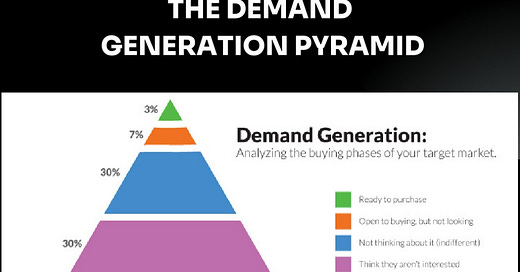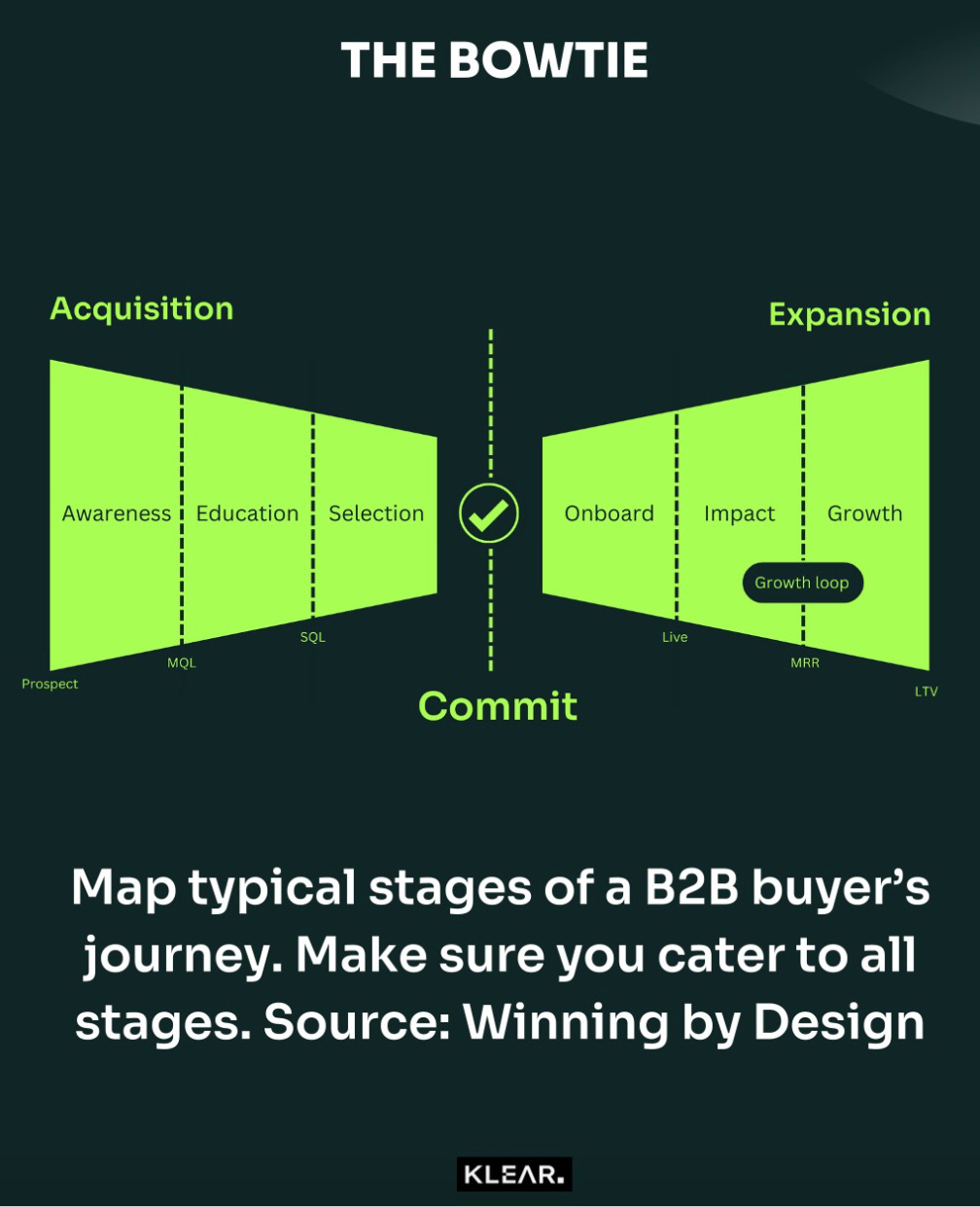Saas go- to-market became an even greater mess with AI. We’ve found these 4 frameworks will unconfuse founders, sales and marketing people.
Once folks get this, the fog settles and the only question will be “how do we make it happen!?”
…which is a way better dilemma to have, than
“help, we need to build pipe!?!”
…that dilemma, mind you, is keeping way too many commercial leaders and CEOs up at night.
In that 👆state of mind, you can’t even SEE the dots, let alone CONNECT the dots.
When you’re in that state, what you typically have is a few million of revenue built through
❌ a lot of legwork,
❌ your network
❌ using channel partners
❌ upsells
❌ luck.
What you’re missing is systems that are:
✅ Repeatable.
✅ Scalable.
✅ Reliable.
✅ Doable.
Sounds like banans, eh? 🐒 🍌
We've got a digital course to help you craft the foundations of such GTM systems and as a valued and beloved subscriber of The Electric B2B Newsletter, you get direct access. « No opt-in needed (I kind of already have your email address, right?)
Here are some of the frameworks you’ll learn - the more important dots:
1️⃣ The Demand Generation Pyramid: it shows the lifecycle stages by awareness. Use it to determine how much relative effort and $ you’re putting into winning each stage
2️⃣ The GTM Wedge: shows you the core pieces of a healthy go-to-market mechanism.
Use it as a planning tool and as a checklist to make sure you’re not missing key ingredients.
3️⃣ The Bowtie: WBD’s model is one of the best to encapsulate the entire buyer journey. Use it for planning to make sure you’re catering to all buyer journey stages.
4️⃣ KPIs for GTM: If you aren’t measuring these, you’re in the dark. At least partly.
Use it to determine key metrics for demand gen, demand capture and retention.
(if you’ll notice: I actually missed “Revenue” - the ultimate lagging metric - under the KPI-group “revenue”…)
The scary-good performance of our AI video ads
Avoiding video is no longer an excuse.
I went bananas when I looked at engagement stats for a video we just launched.
It’s still early into the campaign (= low sample size) but there are 2 things to note:
It is a talking head video that is 15 minutes long. Just head talking captions + bullet points occasionally.
The talking head is a hyperrealistic AI avatar of our client - who didn’t want to do “real” video.
I had serious doubts going into this:
People will subconsciously or consciously KNOW that this is AI and will tune out
…says I.
But the client insisted, and I’m glad he did. Because, I was wrong. Look at the engagement rate on this 15-minute video:
38.47%
I’ve never seen that on any of mine, or clients’ long-form talking-head videos.
I’m happy with half of that on such content-heavy videos.
I thought: people would surely see that this is AI and just leave. Maybe they did, but they definitely are staying around for 5+ mintues on average.
I’m not linking the video because you’d mess up our stats :) but here is a screenshot:
Sure, it’s 15 minutes of pure value, hitting pain points, a case study - all the goodies you want to have to get people to want to dive deeper.
They land on this video from a similar-looking video ad that is performed by the same AI avatar. It works with a CTR of 1.82% out of the gate, during the learning period, without having optimized anything.
So: AI-generated video works, at least in certain situations.
You want to know the part that scares me?
It’s this: video used to be an advantage that I leaned into heavily in client-work and my own companies’ GTM ever since - well, forever.
(Remember digital videocams recording on a tape? That was me, shooting my first vids in 720x480px.)
Such a small portion of people and companies are willing to do video even today, let alone do it decently. With AI, the video-advantage in GTM is diminishing fast.
The “I’m not good on video” excuse has just gone out the window. So, as the playing field is being leveled in video, what is gonna be the competitive advantage?
It’s the message. The narrative.
And being genuine? That’s what I would believe instinctively… After all, being authentic is always an advantage, right!?
I don’t know.
Most videos we do, don’t need the talent to be genuine. 100% of the time, your audience doesn’t care about you personally; they care about how you can help them.
And as long as the video does a good job at that (and/or entertaining), you don’t give a hot damn about the head that is talking, or whether you even have a head talking.
That’s true for all the videos that are transactional or instructional. But the types of videos you post on social and in your launches/campaigns? The ones used to build a connection?
I still believe those videos need to be real, sometimes even raw, and authentic.
Here’s to these beautiful (and scary) times:
Dan Renyi
Founder, Klear B2B








